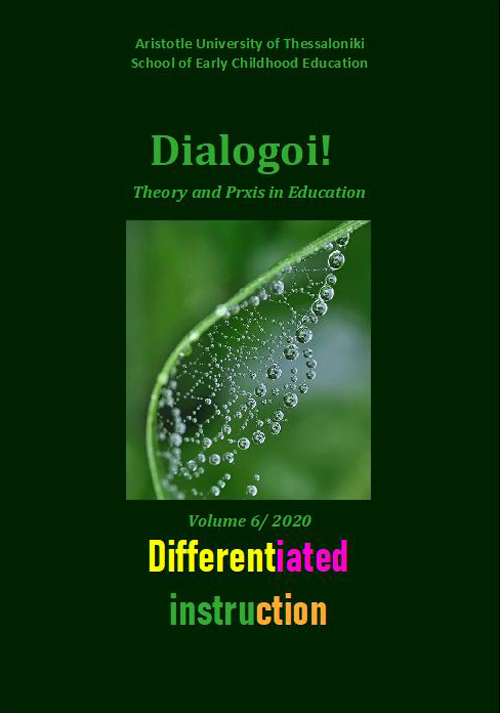Redefining the role of drawing activity in young children's learning through a collaborative professional development project

Abstract
This study presents a seven-month professional development program which sought to empower 12 preschool teachers in their educational planning taking into account the opportunities drawing activity offers to young children for thinking, communication, and learning. Systematically observing and documenting drawing events in their classrooms, which were analysed through collective reflection in the supportive environment of group meetings, the teachers co-designed, implemented and evaluated innovative projects to capitalize on and enhance children's drawing activity.
Article Details
- How to Cite
-
Παπανδρέου Μ. (2019). Redefining the role of drawing activity in young children’s learning through a collaborative professional development project. Dialogoi! Theory and Praxis in Education, 5, 168–179. https://doi.org/10.12681/dial.21996
- Issue
- Vol. 5 (2019)
- Section
- Presentations of Innovative Programs

This work is licensed under a Creative Commons Attribution-NonCommercial-ShareAlike 4.0 International License.
Authors who publish with this journal agree to the following terms:
- Authors retain copyright and grant the journal right of first publication with the work simultaneously licensed under a Creative Commons Attribution Non-Commercial License that allows others to share the work with an acknowledgement of the work's authorship and initial publication in this journal.
- Authors are able to enter into separate, additional contractual arrangements for the non-exclusive distribution of the journal's published version of the work (e.g. post it to an institutional repository or publish it in a book), with an acknowledgement of its initial publication in this journal.
- Authors are permitted and encouraged to post their work online (preferably in institutional repositories or on their website) prior to and during the submission process, as it can lead to productive exchanges, as well as earlier and greater citation of published work (See The Effect of Open Access).



